The Jolly Rogers Motorcycle Club is one of Seattle's oldest motorcycle clubs. The club once numbered 100 including a woman's division and a motorcycle stunt-and-drill team that rode white Harleys in the Seattle Seafair parade. On this page you will find an assortment of the club history including newspaper articles, pictures, notes and posters. Make sure you check Jolly Blog for more Jolly Rogers Motorcycle Club history.
Jolly Rogers Hill Climb 1995. (skip ahead to 0:18)
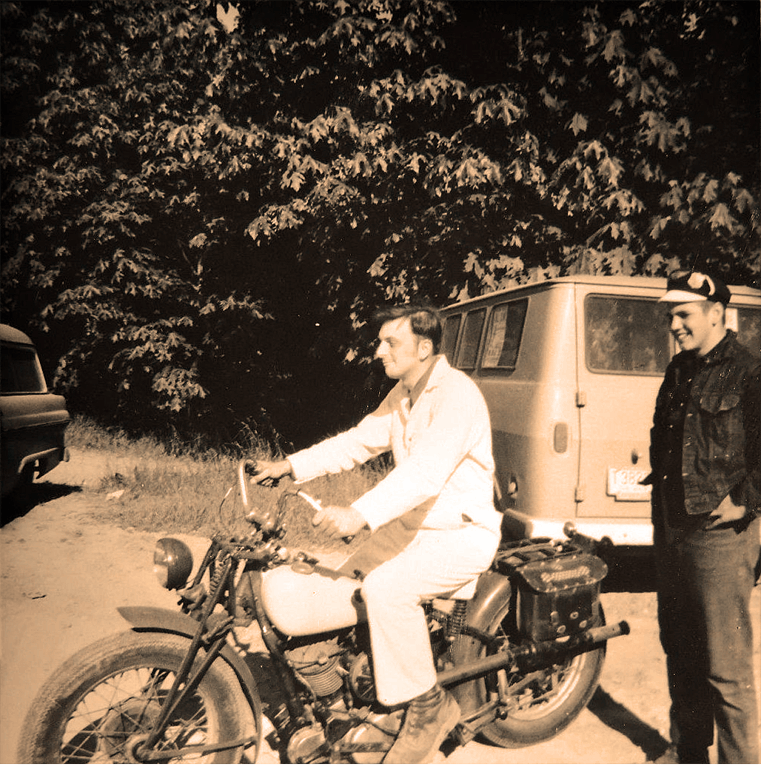
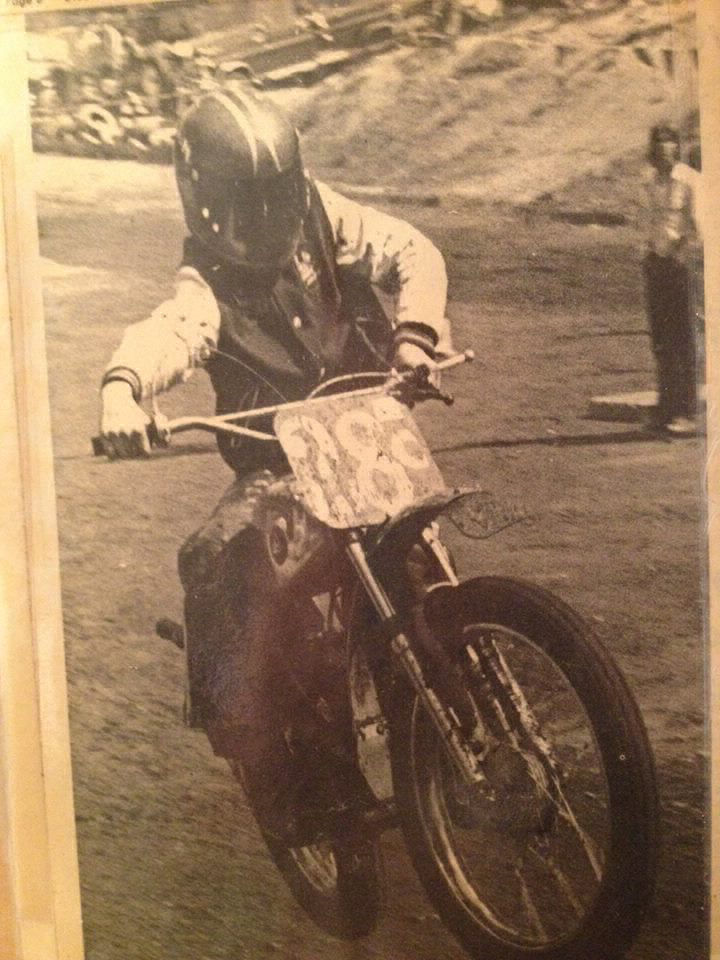
The Hill From Hell Part 1 & 2 May 18, 1946
GeekBobber: pictures of Jolly Roger Motorcycle Club Meet - 1946
Seattle Dealer History on GeekBobboer: Dewey's Cycle shop.
Also, check out the feature article on Bob Budschat, the man to beat at the Jolly Rogers Race Track.
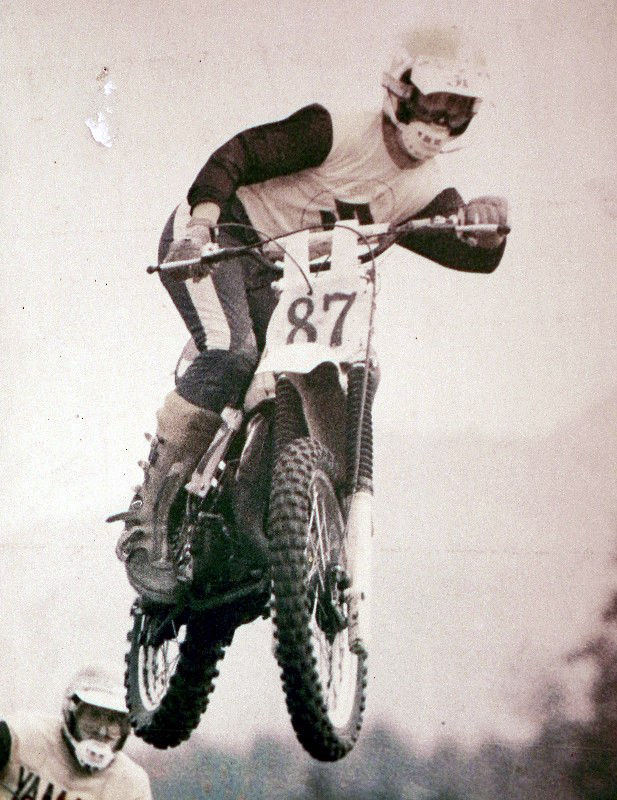
showing long time owner and long time Jolly Rogers Motorcycle Club member Carmen Tom. It was a popular conversion from DownTown Harley to give a Sportster the appearance of a big twin
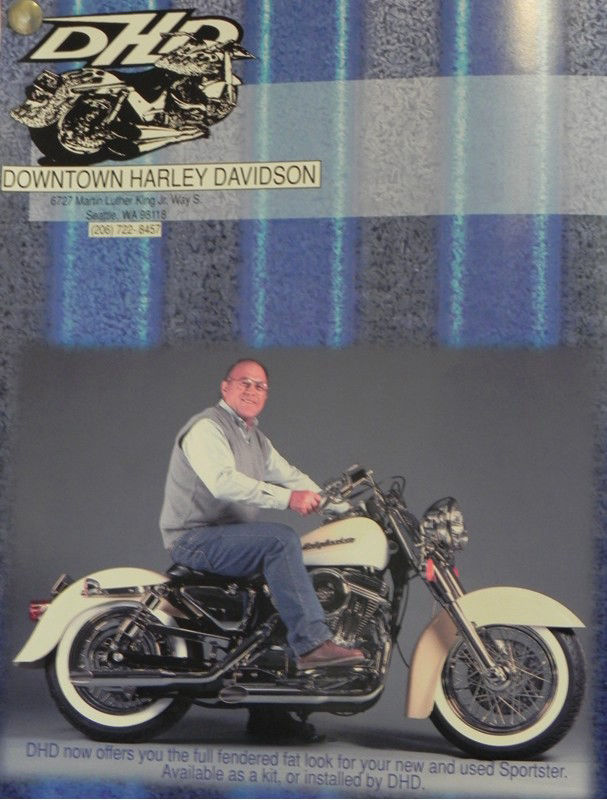
A couple old newspaper articles of the Jolly Rogers Motorcycle Club, circa late '60s.
Long time Jolly Rogers Motorcycle Club member Ron Bennett, cleaned the out house, worked on the track, flagged, and raced all in one race day.
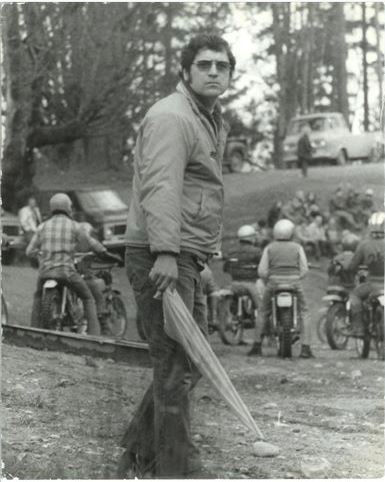
Old Christmas card (1997) from Bruce Bennett to dad Ron Bennett long time Jolly Rogers Motorcycle Club member, showing Bruce at the Jolly Rogers Motorcycle Club race track with the famous hill climb in the background.
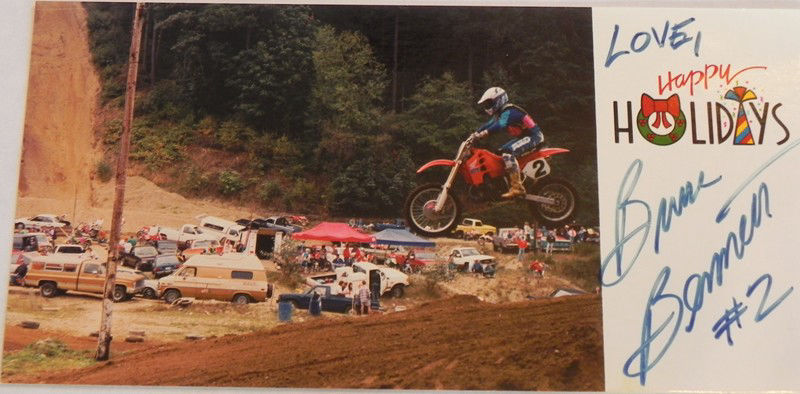
85 year old Carmen Tom, a native of Britton, South Dakota: Long revered in the motorcycle community and longtime member of the Jolly Rogers Motorcycle Club, spent the majority of his life in its pursuit (motorcycles AND the community). Likeable and friendly to most, he frequently took time to chuckle it up with visitors to his shop.
Beginning in 1958 from his business zoned house on Empire Way (now Martin Luther King Way) in Seattle, he sold Jawa motorcycles from his single car garage. Eventually, he built a showroom in his front yard which went on to replace his house. He had all manner of dealerships including Mustang, Simplex, Suzuki, Maico, Bultaco, Clymer's Indian, Triumph, BSA, and finally Harley Davidson.
His fame was bolstered by being graced with a full page write up in the Seattle Times. Approaching old age, he turned the Harley dealership over to his son Russell who bought property in Tukwila and moved it there. Known as DownTown Harley: It continues today in Renton.
Carmen’s love for motorcycles and their riders saw him frequently at the shop jawboning with his fans.
Little able to ride, he still keeps many motorcycles in his garage, just so he can look at them. He has a Chinese Army sidecar rig, Velocette, Panther, Ural, BMW, Royal Enfield, and many Harley's. An avid Bible reader, it’s easy to imagine what his heaven will be like. Ride on, Carmen.
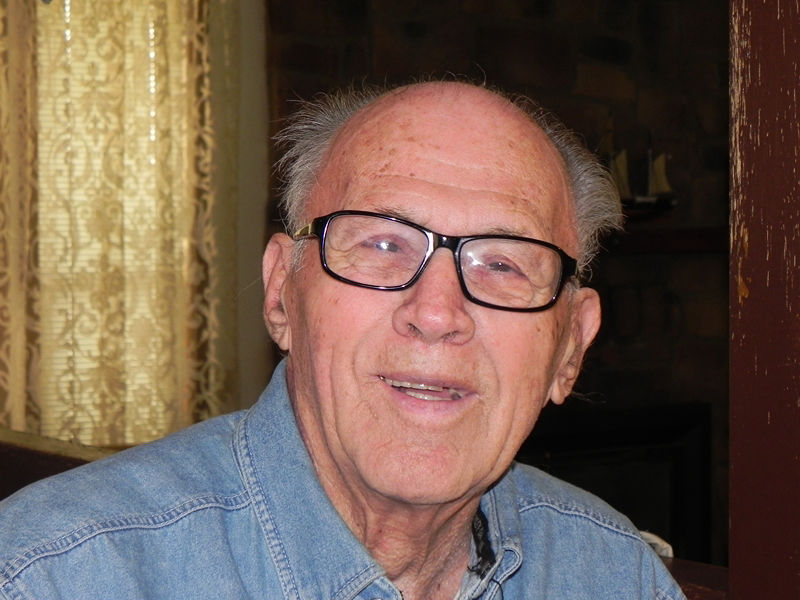
Carmen D. Tom, a long time resident of Maple Valley and Jolly Rogers Motorcycle club member passed away peacefully on April 20, 2018. Carmen was born on April 26, 1926 in Britton, South Dakota to Mr. and Mrs. John D. Tom.
Carmen married Donna Hansen on June 19, 1949 in Britton and later moved to the Seattle area. They had four sons; John, Michael, Eugene and Russell. Carmen was known in the area for his passion of motorcycles which lead him to sharing that love by starting Downtown Harley Davidson.
Carmen is survived by his sons John, Michael and Eugene including many grandchildren and great grandchildren. He is preceded in death by his wife Donna and son Russell.
Services to be held Saturday, April 28th, 2018 at 10:00 am at Powers Funeral Home in Puyallup, Washington with a reception to follow.
Jolly Rogers Hold Class C National Climb May 17, 1964
From American Motorcyclist July, 1964
Members of the Jolly Rogers Motorcycle Club of Seattle, Washington have been receiving much deserved accolades for their first venture in staging a National Championship Class C Motorcycle Hill Clime event, Sunday, May 17, 1964. A jam packed house watched the Northwest's top riders attempt to whip the 430-foot Jolly Rogers hill on Highway 99 between Tacoma and Seattle. Deputy Sheriffs on King County finally had to stop the incoming traffic when parking space became non-existent.
Jolly Rogers MX track 1992
These 2 pictures are of Benny's (Ron Bennett - long time Jollies member) son Bruce at the Jolly Rogers Motorcycle Club MX racetrack. The track originally was designed for scrambles (right and left hand turns and some mild jumps) but later converted to motocross. You can see the Jollies hill climb in the background of the second photo.
Jolly Rogers Motorcycle Club Drill Team
The article below appeared in the monthly magazine American Motorcycling, November 1957. The Jolly Rogers Motorcycle Club entered it's drill team and the float below in the 1957 Seattle Seafair Parade. If you look close at the picture you can just make out the Jolly Rogers Motorcycle Club pirate logo. Also below is a rare photo of the Jolly Rogers Motorcycle Drill Team, pre 1970. Long Time Jollies member Carmen Tom second from left.
Picture 1: #87 Ron Bennett with his suspenders and beloved football helmet, Dan Mc Carthy #88m on the 73 BSA and the Great Seymour #29m on the 501 Maico in the Open class at the Jolly Rogers Motorcycle Club Racetrack, Kent, WA.
Picture 2: Old-timers 2nd year, late 70's, at the Russ Smith Memorial race at the Jolly Rogers Motorcycle Club Racetrack, Kent, WA.
Picture 3: Ron Bennett's bike from the mid 60's 250cc CZ AMA Sportsman #7 with the late Lloyd Albee a member of the Seattle Motorcycle Club.
Development and falling membership are checkered flags for a Seattle motorcycle club and the dirt trails it blazed
Article copied from the Seattle Times Scene, Sunday, February 7, 1999.
Her sentences fall like timber. But her somber moods are offset by
lively memories, and in those moments, Lila Bulen is smiling and chirpy.
Her husband, Ken, died in October 1997 of chronic emphysema, but he lives
on in the pictures and programs that pass through her quivering fingers.
They were married six weeks short of 68 years, many of them spent in
this stately Mount Baker home overlooking Lake Washington. He did right
by her, he did. She cocks her head wistfully, looking at the view.
They were Franklin High sweethearts -- Lila a 16-year-old freshman, Ken
a 20-year-old senior.
"When we were going together, he said to me, 'My parents won't let me
have a motorcycle.'"
"I said: 'I';; let you have a motorcycle.'"
So they rolled into marriage, and when he rode, he and the bike were
one. She loved tagging along, hugging him from behind as they zipped from
race to race. It's enough to make an 85-year-old great grandmother forget
she now needs a walker just to get from the living room to the kitchen.
Around 1941, she and Ken had gone camping when a fellow rider, a stick
of dynamite named Woody Combs, rode up, headlights aimed at the skies.
Woody and Ken sat by the campfire and talked about how the Queen City
Motorcycle Club, with its track near the King/Snohomish county border,
catered mainly to North End riders; it was time the South End had a club
of its own.
"That's how Jolly Rogers was born," Lila Bulen says. The dagger biting
pirate they chose as the club's symbol was borrowed from nearby Highline
High.
At the time, motorcycle events like the Gypsy Tours at Long Beach,
Pacific County, were grassroots family occasions with picnic lunches. At
races, guys would slap numbered plates on cheap trail bikes and fortify
their thin, fighter-pilot headgear with football masks. Any kid could
imagine himself a future Red Farwell, one of the sport's kings, just by
stepping outside.
"It seemed like any neighborhood, you could just go down to the corner
and ride a vacant lot," says Ted Abernethy, owner of Motorcycle Works of
Renton, who first won a race at Jolly Rogers in 1972. "But most of the
areas we rode in are closed now. It was killer back then."
With miles of scenic roadways, the Northwest was a popular place to
ride. "Guys would come up from California and ride our track, our hills,"
says Larry Poitras, one of the Jolly Rogers' charter members. "This is
better hill country, anyway. The dirt's better. Down there it's just like
putting the desert at a slant."
And before the brush fires of development caught up with them, Seattle's
wildlands were fair territory for two-wheeled explorers. That's how Woody
Combs stumbled onto the property that would become the Jollie's site. He
approached the aging potato farmer who owned the land; club members
chipped in for the down payment. Final cost: $1,500.
With two horses and a plow, they carved out a small dust bowl for riding
loops. Then came a larger track for racing. It was 1943. Larry Poitras,
partial to Indian Scouts, remembers: "We would go out there every night
in the summer on our Indians and Harleys and ride around in the bowl," he
says.
They played a game called Caveman Soccer. Riders would mount their
bikes, then another guy would get on with a balloon tied behind his neck
and a rolled up newspaper in hand. They'd all buzz around in circles,
trying to knock opponents out of the game by breaking their balloons.
Some were so competitive they'd pre-soak their newspapers in wax or hide
sticks inside to make them harder.
"It got pretty hairy," says local motorcycle historian Tom Samuelson.
"Guys would beat the hell out of each other."
The first concession stand was a counter set under a big maple tree
offering hamburgers and pop until the county health department blew a
gasket. One of the Jollies set up an old water heater and installed a
basin so people could wash their hands.
Race cards were loaded with guys named "K.C." and "Red" - notable Red
Farwell of Tacoma, a real sportsman who won the Jolly Rogers' first 5/8
mile race and insisted the prize money be distributed among all the
racers. But in 1952, at age 40, Farwell became the first rider killed at
the annual Daytona Beach run, a well-known 200-mile race in which he'd
finished second the year before.
"That was a hell of a blow," Poitras says. "Guys were blowing their
noses and everything."
THE CLUBS GLUE
Ken Bulen relished the club he co-founded. Lila Bulen, meanwhile, became
the only woman to immerse herself in the life, taking on the role of
publicity director. Throughout the years, it would be the Bulens who
would hold the Jolly Rogers together, who hung in during the dry spells.
"They were the stabilizers of the club," Poitras says.
Lila went out to the university and took a course on promotions and
learned what you do. You hustle. You get your word out. You prove
reliable.
Here's a 1952 program, with ads for Ivar's and the Two Bells Tavern,
where Jollies would meet for beers. Inside, on one cover, an ad for
Poke's Motorcycle -- Lary Poitras' Indian Shop -- on Capital Hill; in
side the other, an ad for (Carmen) Tom's Cycle in the South End.
Lila did that. And this too: a newspaper ad for the hill climb,
admission a dollar and a half, kids under 12 free, boasting, "Thrills!
Spills! Chills!"
Says Poitras, now 76, with hydraulic eyebrows and a disheveled
pompadour: West of the Mississippi, that hill is it. There was no other
real hills in Seattle before the Jolly Rogers. The others were just
little dig-a-lings."
Looking at it now, the slant seems impossible, maybe a 50-degree angle.
It's a plunging groove that strikes you first as the result of stormwater
runoff until you see the propped-up board that served as a starting point
for the riders hellbent on rocketing to its 420-foot summit.
Carved out of the tree-dotted hillside by a nervous guy on a bulldozer,
it is reputedly the highest hill climb in the West outside of one owned
by the Widowmakers Motorcycle Club in Utah. There had been other hill
climbs, like Queen Anne's Counterbalance or other in Lake Forest Park,
Granite Falls and Portland -- but this was the won picked by the American
Motorcycle Association for its national hill climb in 1964, the only time
Washington state has hosted on event other than 1924's national at
Paradise, Mount Rainier.
Over the years, folks would come from as far as Canada to see the gutsy
racers lurch and swagger up the incline, carloads of fans parked below
and honking like maniacs when the bikes would clear the rise.
Riders who didn't make it to the top would have a hell of a time getting
back down, but their bikes would fare worse if the squads posted at the
climb's margins couldn't snag them with tautly pulled ropes to keep them
from skidding down the hill.
The crowds loved it -- and so did the Jolly Rogers, for whom those 10
acres weren't just a place to hold events but to camp and get away from
it all. For them, motorcycling was a way of life, so much so that they
vowed the site would never be used for anything but the sport.
"It was a wonderful time of my life," Lila Bulen says now. "I dearly
loved it."
Now all those programs with ads she sold, all those articles that were
written thanks to her publicity efforts, all the pictures she collected,
are stuffed in boxes. It must have been interesting, you think, to have
been meeting all those people, but no, she says, that's not what kept her
going at all.
"I was keeping Ken happy," she says, stifling a cry, "I did it for
love."
A DIFFERENT SPORT NOW
After the sport peaked in the 1970s, the club began to fade. Young
riders, the hope of the future, came to meetings but didn't pay their
dues. The Jolly Rogers even discontinued their Seafair floats; they'd run
out of girls to be queen.
Says Carmen Tom: "We all got to be so old that we couldn't put on meets
anymore."
Meanwhile, dirt biking has enjoyed a renaissance that has left
old-style, low tech bikers in its dust. Walk into motorcycle gear shops
and you'll see stylishly disorienting, slow-motion footage of high
flying, faceless riders as colorfully garbed as tropical frogs, their
high jinks accompanied by ear-ripping alternative rock music. It's a
skateboarders' sport now.
"I haven't seen it this popular since the mid-to late 1970's," says
Abernethy, the Renton shop owner. "Which is amazing, considering there's
no place to ride."
Tracks once a swarm with mud-spattered bikes in places suck as Tacoma,
Woodinville and Puyallup are gone, some turned into shopping centers, as
land became too valuable to hold on to, neighbors too wary of noise.
Now you can't poke your treads anywhere off-road without running into
signs threatening fines and jail time for trespassing. The sport has been
displaced, from once-accessible public lands to privately owned ones.
"That's getting to be the only way to do it," Abernethy says. "Just
hoping there's an open-practice day."
Carmen Tom, who has built himself a comfortable life as founder of
Downtown Harley-Davidson, says the sale would never have happened had
Kenny Bulen still been alive. The old man would get so worked up at
meetings over t he very idea of selling that Tom thought Bulen would have
a heart attack right there at the table. But with his death, everything
began to unravel.
With surrounding properties falling prey to developers, Tom says the
club's aging members saw little point in fighting. The zest and vows of
their youth had wilted under old age, the lure of money and painful
David-and-Goliath realities.
"Probably the hardest thing in the world was for me to agree to let the
property be sold." Lila Bulen says. "This was my husband's dream. I never
could have signed to let it go had he survived."
No one is discussing price tags, but it's a sure bet Polygon, Eastside
developer buying the property, is offering more than the $1,500 it took
to buy it 60 years ago. Still, the riders say it couldn't pay for the
memories left by old-timers who once raced here.
"Those guys'd be rolling in their damn graves if they knew what was going
on." Larry Poitras says.
Carmen Tom shuffles along the dirt in the looping pantomime of the
fading track where he taught his four boys to race. The sight is strewn
with litter, the dips mud-bogged, the wooden bleachers cracked and faded.
The snack bar and control tower are laced with graffiti leveled at
Polygon with what might be delicately called criticism.
"I don't blame them," Tom says. "We had a nice track. A nice hill."
He and members of the Seattle Motorcycle Club have been scouring the
county for possible relocation sites, to no avail.
"It's a shame to see it go," says SMC president Rick Harpster. "We all
got a big tear in our eye."
Says Carmen Tom: "It's a dirty crime to shut it down. I just hate to see
it die."
Super 8 Home Movies of the legendary Mickey Fay racing at the also legendary Jolly Rogers Motorcycle Club Race Track in Kent, WA
As a sailor from Britton, South Dakota, Carmen piloted the troops to shore in a landing craft. In later years Carmen was president of the Jolly Rogers Motorcycle Club for about 10 years. He and "lifetime" Jolly's member "the Great Seymour" were largely responsible for saving the club from dying after the club grounds and race track sold.
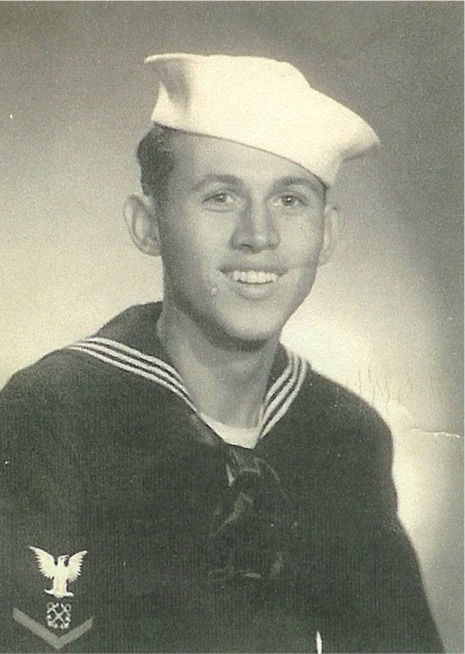
A number of the Jollies scooted on down to Puyallup Fairgrounds on Saturday 11/27/2010 to take in Mickey Fay's NW Extreme Flattrack Racing / Motorcycle & Quad indoor flattrack. Despite the cold and the aluminum bleachers, the races were pretty exciting, the track was large enough for passing, and some riders were very good!
To some that do not know Mickey Fay (pictured above to the left along with teammate Jeff Haney) is a member of the Washington State Motorcycle Hall of Fame. Mickey holds his spot in motorcycle history and was a frequent competitor and winner at the famous Jolly Rogers Motorcycle Club race track in Kent, WA.
About 20 years ago Honda introduced a 500 4-stroke single intended as a dual purpose bike. Burien Honda's service manager Roger Stanley hopped up the engine, Richard Washer (Wasco) made a frame, and Mickey Fay became a member of Honda's Dirt Track Team and part of Honda's Grand National Flat Track program. He won the '79 Houston TT (at the Houston Astrodome). It was such an achievement for a bike never intended to be raced that Honda ended up giving Mickey a factory ride for a couple of years. While in the mix with the national competition, he never achieved a similar distinction and is now promoting local races. See http://mickeyfaysraces.com
Pictures from Mickey Fay's NW Extreme Flattrack Racing / Motorcycle & Quad indoor flattrack, Saturday 11/27/2010.
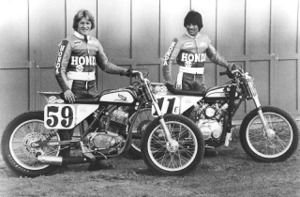
Larry Poitras, whose blocky orange Poke's Cycle building on Capitol Hill was a mecca for motorcycle buffs, took a chunk of Northwest cycling history with him when he died Saturday (Feb. 20) of lung failure. At 77, Mr. Poitras was one of the last surviving founding members of Jolly Rogers, a dirt-scrambling group of bikers that in 1943 built the South End's first major motorcycle track. They bought the land for $1,500 and used two horses and a plow to create the tracks. They bulldozed a bike climb that exceeded a 45-degree angle. Read the complete article.
By Carole Beers
Seattle Times Staff Reporter
McLaughlin vs. Whipple - 1993 Jolly Rogers Motorcycle Club race track
Old Jolly Rogers Events Posters
Present were: Glenn Imboden, Leroy Imboden, Cyrstal Wadkins, Doug Schrewsbury, John Martinolich, Arvid Edeburn, Delores Edeburn
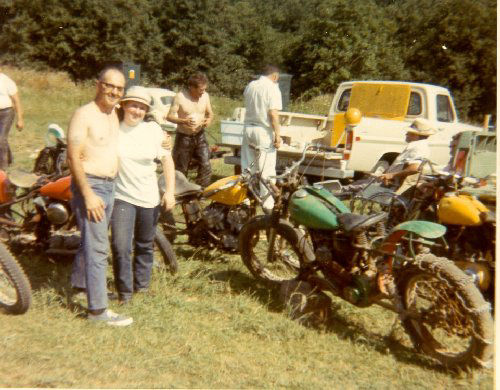
Ron Bennett, long time Jolly Rogers member
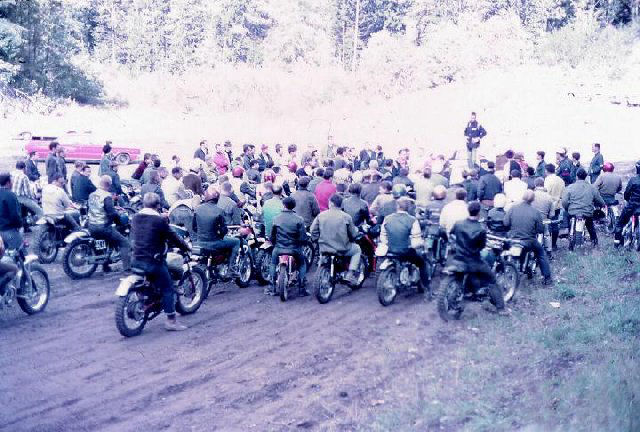
Long time active Jolly Rogers member Marion "Slimbo" Thomas died November 23, 2004.
L. Ron Bennett, M. Slimbo, R. Carmen Tom

Jolly Rogers member Ron Bennet in younger years
Members of the Jolly Rogers Motorcycle Club prepare the steep approach for a biker hill climb challenge at the famous Northwest Jolly Rogers grounds in Kent, Washington in 1951.
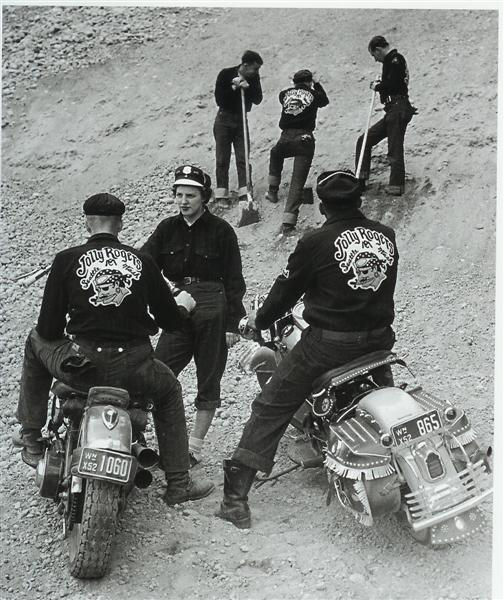
1953 Northwest Motorcycle Review - By Lila Bulen
Jolly Rogers member Dave Seymour in younger years
This is what's left of the original Jolly Rogers hill climb looking from the top onto the new houses at the bottom.
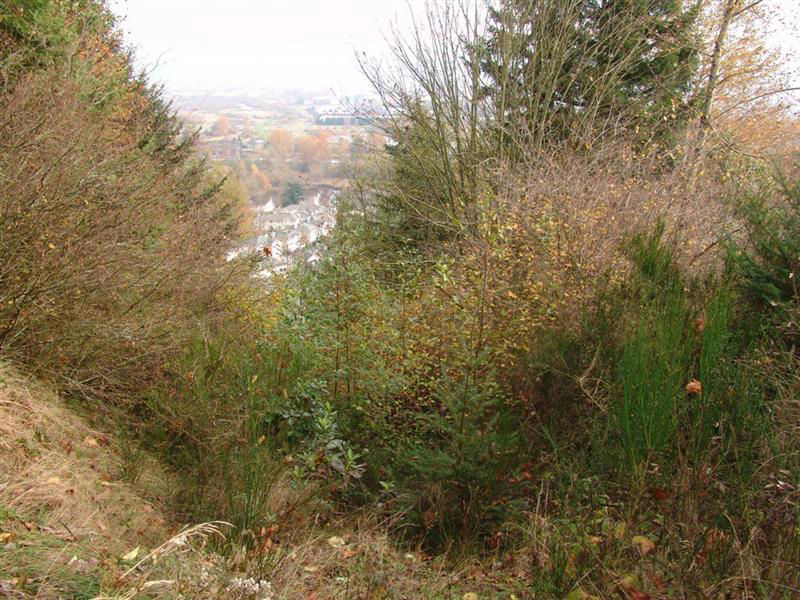
1962 Jolly Rogers race for PI needy kids from the UW Digital Photo site. The race is the annual PI Christmas Fund Scramble.

Copy of the cover to an early Jolly Rogers membership roster with a drawing of the pirate. This appears to be from the mid-40s before the back patch existed.
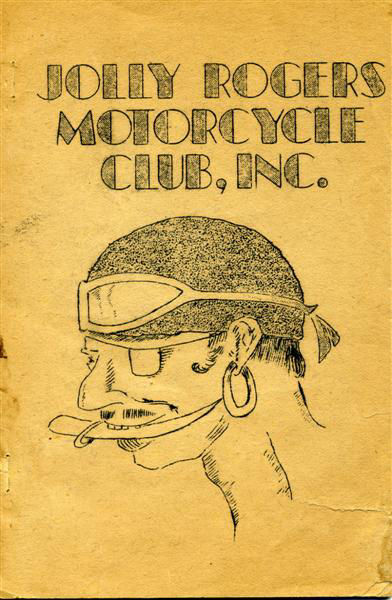
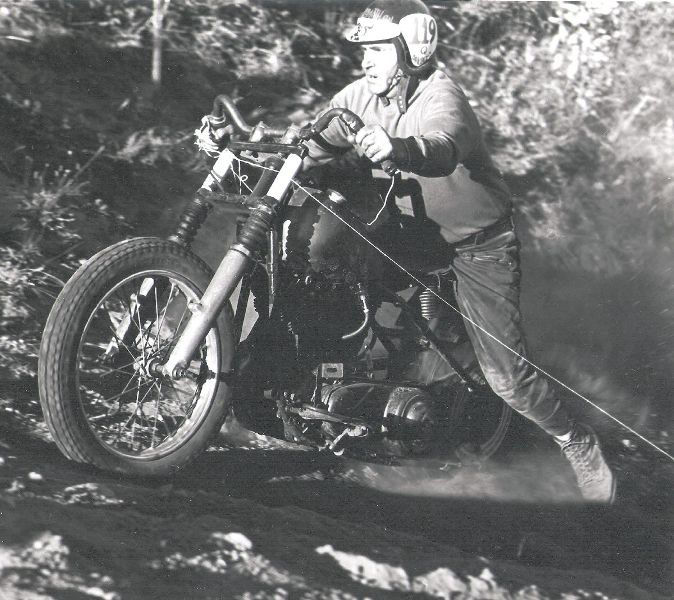
1948 shot of the Jolly Rogers back patch. (See fella walking away from dumped bike).

List of Known dates of events that the JRMC participated in back in the day.
Super 8 Home movies from Jollies long time member "The Great Seymour" of races at the famous Jolly Rogers Motorcycle Club race track in Kent, WA circa 1970-1972.